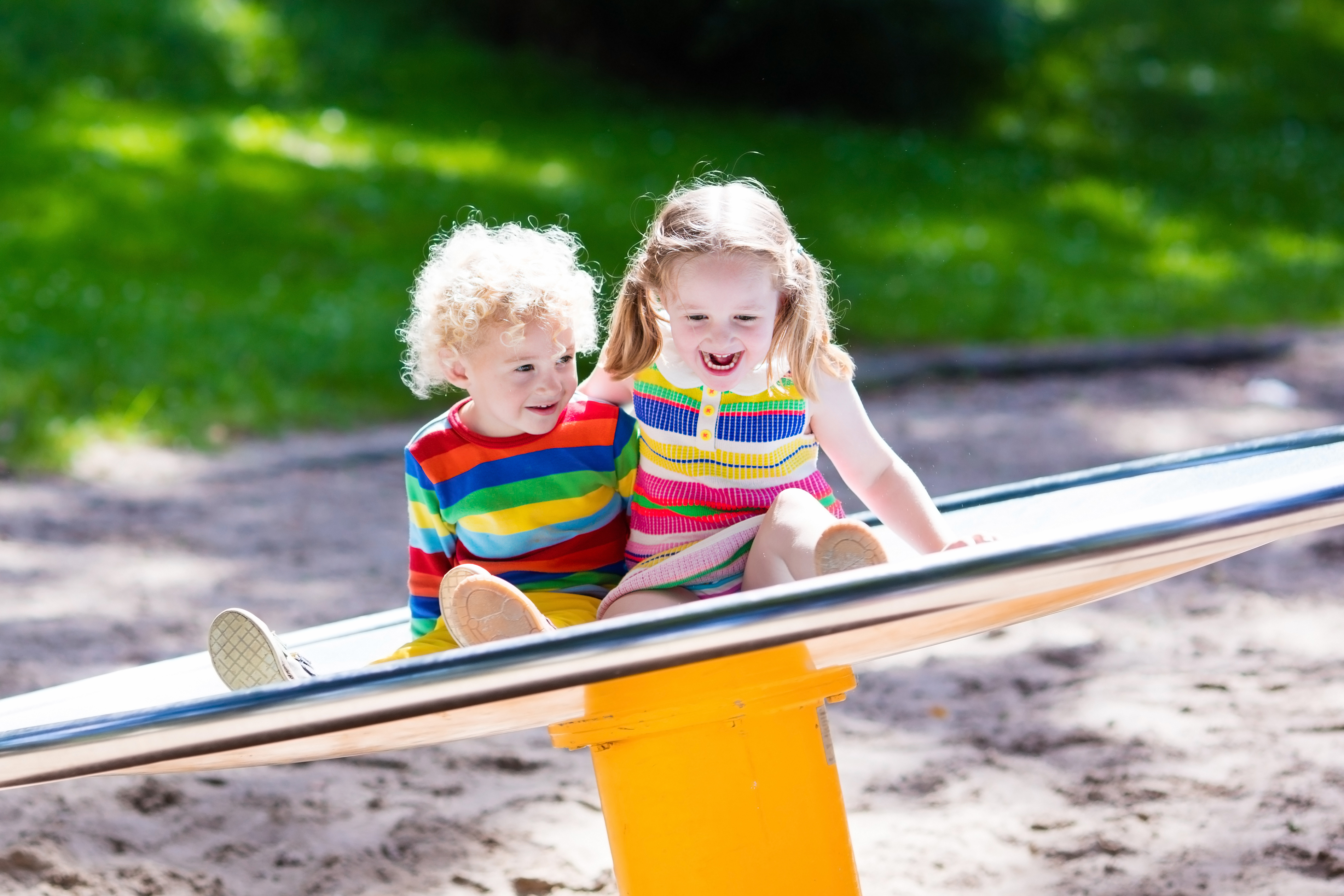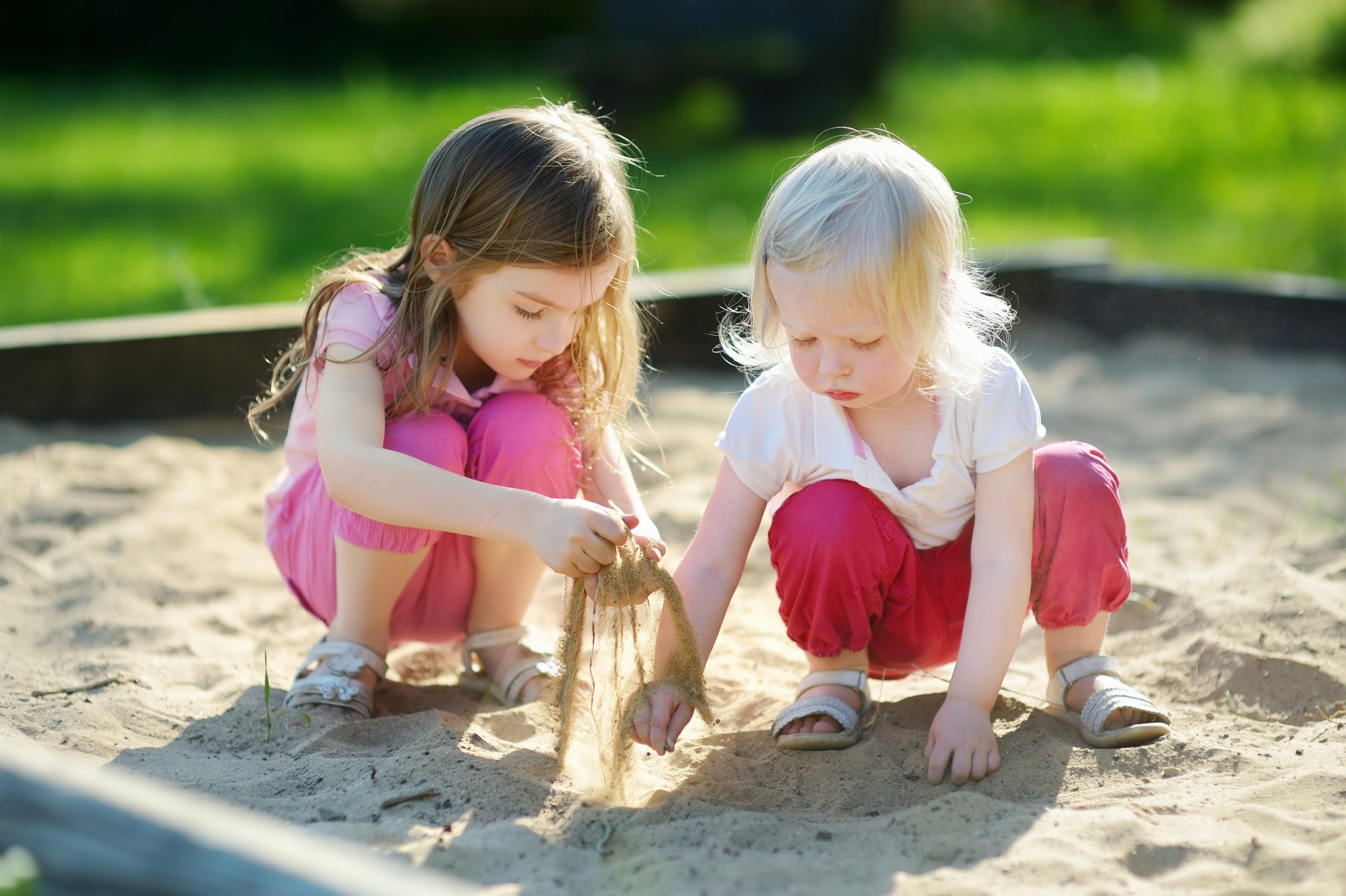Playing outdoors can be engaging for all ages and cognitive abilities. Playing in the sand isn’t simply just for entertainment, it can also be a vital way for many children to learn and grow.
Many parents and caregivers alike are interested in finding new and exciting ways to occupy their little ones. As a full time Swim Instructor, I am well versed in all sorts of fun games to play in the sun. One of the many activities beloved by all is playing outdoors, specifically with sand! This can be engaging for all ages and cognitive abilities. Playing in the sand isn’t simply just for entertainment, it can also be a vital way for many children to learn and grow over the summer months. From babies grabbing fistfuls of the granular material, to school aged children exploring their inner architects with masterful sand castles, this one material offers countless exciting ways to play, learn and grow!
Most commonly children will see sand in a beach or open waterfront environment. Exciting things to encourage both developing motor skills and cognitive ability. As a side note, whenever children are in an open waterfront environment it is extremely important that a lifeguard is present and and preventative precautions are taking place in terms of water safety. This is a great way to incorporate stationary learning, exploration of natural environments and a great introduction to leading an active lifestyle by taking breaks to either swim or take walks. Many education specialists, including Dr. Sandra Crosser, have been cited exclaiming how playing with sand is fantastic for early childhood development. The main reason for this is “because sand play is open-ended, the child determines the direction and path of his or her own play. This freedom then clears the way for the child to build developmental concepts.” The constructivist theorist Jean Piaget, remarked on how children have their own internal drive to discover and make sense of the world around them. Although it may seem ridiculously simple and transparent, children who play with sand are likely to be more social, creative and self driven.
 Fun in the Sun: Playing in the Sand
Fun in the Sun: Playing in the Sand
Parents, teachers and recently toy companies have all promoted the exceptional educational values found in sand play. Ebay released a list of the 8 Reasons Why Playing in the Sand is Good for Kids, referring to the essential skills of stretching the imagination, promoting physical development, and encouraging social interaction. Not only does playing in the sand teach children social behaviors, but it may also help them in the classroom. Playing with sand introduces many children to mathematical concepts involving shapes and sizes, energize them about science labs and natural earth sciences, and embolden and boost their creative artistic expression through a free and unstructured environment of play.
However, if you and your family are unable to find a beach or suitable outdoor space near you – fear not! Many great parenting portals and websites, including Pintrest, have great spaces with pictures and recipes for how to make your very own sand or sand colored play dough at home. Many parents also opt for dry rice or beans as an alternative to sand. Different materials teach children about texture and weight. These at home sands can incorporate totally new and vital components involving sand play. In fact, the majority of the suggestions include many other elements incorporated into the sand. For example, one adult created a treasure hunt in a deep, narrow plastic bin. A different one involves a wider bin with both sand and water for a multi-material learning lab. These are very common in preschools all across America.
Overall, playing in the sand develops children cognitively, socially and intellectually. Through unregulated play time children are able to find their own creative expression and virtually teach themselves. Summer is short and sand represents an excellent way to promote early childhood education whilst having fun!
















